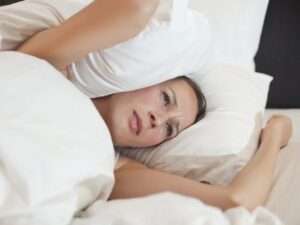

Last Updated July 11, 2023
If you’re just tuning into this blog series, I’m discussing how to treat various hormonal conditions naturally. While there are situations and circumstances where medical therapies are necessary, I truly believe that natural remedies are foundational, and should always go hand in hand with medicinal remedies!
You can find the other five parts of the series here:
Natural Remedies for Polycystic Ovary Syndrome (PCOS)
Natural Remedies for Endometriosis
Natural Remedies for Fibroids
Natural Remedies for Low Progesterone
Natural Remedies for Estrogen Dominance
Endometriosis is a painful, chronic disease that affects at least 6.3 million women and girls in the U.S. It occurs when tissue that lines the uterus (tissue called the endometrium) is found outside the uterus – in the abdominal region on the ovaries, fallopian tubes, and ligaments that support the uterus; the area between the vagina and rectum; the outer surface of the uterus; and the lining of the pelvic cavity.
With endometriosis, displaced endometrial tissue continues to act as it normally would – it responds to estrogen and therefore thickens, breaks down and bleeds with each menstrual cycle. Because this displaced tissue has no way to exit your body, it becomes trapped in your pelvis. The trapped tissue in your pelvis can become irritated, eventually developing scar tissue and adhesions (in which tissue binds your pelvic organs together) – which can cause pain, infertility, scar tissue formation, adhesions, and bowel problems.
Reducing excess estrogen is the most important first step for women suffering from endometriosis. This means avoiding estrogens in our food and our environment. The number one source of estrogen exposure in our food is from conventional meat and dairy products. Everyone should avoid eating non-organic animal products ALL THE TIME, but this is especially important for women with endometriosis. Remember that the endometriosis tissue responds to estrogen, so the more estrogen in your body, the worse your endometriosis will be.
Another large source of estrogen exposure is all xenoestrogens (fake estrogens) found in our environment : plastic, canned goods, cosmetics, body care products, cleaning supplies, etc. The myriad of chemicals found in these items are usually estrogen-based which simply adds to the estrogen load on your body. It’s extremely important to clean up your environment, make sure you’re only using the cleanest items in your home and on your body, and always choose the cleanest animal products you can afford.

The primary symptom of endometriosis is pelvic pain, often associated with your menstrual period. Although many women experience cramping during their menstrual period, women with endometriosis typically describe menstrual pain that’s far worse than usual.
Endometriosis is sometimes mistaken for other conditions that can cause pelvic pain, such as pelvic inflammatory disease (PID) or ovarian cysts. It may be confused with irritable bowel syndrome (IBS), a condition that causes bouts of diarrhea, constipation and abdominal cramping. IBS can accompany endometriosis, which can complicate the diagnosis.
Common signs and symptoms of endometriosis may include:
Painful periods (dysmenorrhea). Pelvic pain and cramping may begin before your period and extend several days into your period. You may also have lower back and abdominal pain.
Pain with intercourse. Pain during or after sex is common with endometriosis.
Pain with bowel movements or urination. You’re most likely to experience these symptoms during your period.
Excessive bleeding. You may experience occasional heavy periods (menorrhagia) or bleeding between periods (menometrorrhagia).
Infertility. Endometriosis is first diagnosed in some women who are seeking treatment for infertility.
Other symptoms may include: fatigue, diarrhea, constipation, bloating or nausea, especially during menstrual periods.
Women with endometriosis often suffer from other illnesses such as: allergies, chemical sensitivities, and frequent yeast infections.
The severity of your pain isn’t necessarily a reliable indicator of the extent of the condition. Some women with mild endometriosis have intense pain, while others with advanced endometriosis may have little pain or even no pain at all.

Although the exact cause of endometriosis has never been determined, possible explanations include:
Genetic Predisposition. Genetic predisposition in women with a family history of mothers or sisters that have endometriosis are at a higher risk for developing endometriosis.
Retrograde menstruation. In normal menstruation, the uterine lining sheds following ovulation without fertilization. Blood and endometrial tissue push forward out of the vagina, typically creating steady flow for 3-7 days of menstruation. When retrograde menstruation occurs, some blood and tissue flow backward up the fallopian tubes instead of forward and down through the vagina. If endometrial tissue clogs the fallopian tubes or reaches the peritoneal cavity, these displaced endometrial cells stick to the pelvic walls and surfaces of pelvic organs, where they grow and continue to thicken and bleed over the course of each menstrual cycle.
There are usually no discernible symptoms of retrograde menstruation for most women, as it’s considered a common occurrence that is harmless in women without endometriosis. If any symptoms of retrograde menstruation exist, they might include: reduced menstrual flow, shorter periods, or a complete absence of bleeding with normal period signs (cramping, irritability, bloating and skin changes, PMS, etc.). In most cases, the backward and forwards flow are simultaneous, and any retrograde flow can’t be observed.
Lymphatic Flow Theory. This theory suggests that the endometrial tissue is spread throughout the body via the lymphatic system.
Surgical scar implantation. After a surgery, such as a hysterectomy or C-section, endometrial cells may attach to a surgical incision.
Oxidative Stress. Cell damage from free radicals has been suggested as the leading contributing factor for development of endometriosis. This may be due to dietary factors, exposure to chemical toxins, aging, immunological and inflammatory response.
Immune system disorder. It’s possible that a problem with the immune system may make the body unable to recognize and destroy endometrial tissue that’s growing outside the uterus.
Low Progesterone and Estrogen Dominance. Low progesterone disrupts hormonal imbalance overall. When progesterone becomes low, estrogen usually becomes too high. Estrogen dominance and progesterone deficiency have been linked to the development of endometriosis. To read more about progesterone and estrogen dominance, see The Role that Progesterone Plays in Fertility.
The main complication of endometriosis is impaired fertility. Approximately one-third to one-half of women with endometriosis have difficulty getting pregnant.
For pregnancy to occur, an egg must be released from an ovary, travel through the neighboring fallopian tube, become fertilized by a sperm cell and attach itself to the uterine wall to begin development. Endometriosis may obstruct the tube and keep the egg and sperm from uniting. But the condition also seems to affect fertility in less-direct ways, such as damage to the sperm or egg.
Research has shown that a woman’s body may also form antibodies against the misplaced endometrial tissue – and those antibodies may attack the uterine lining causing a miscarriage (up to three times the normal rate).
There is hope though! Many women who suffer mild to moderate endometriosis can still conceive and carry a pregnancy to term. Especially when you’re implementing the following strategies listed below!

The bad news: just like PCOS, there is no “cure” for endometriosis.
The good news: you have plenty of options when it comes to managing and preventing further endometriosis symptoms and related illnesses!
As with any major diet and lifestyle changes, it takes at least 6-12 months of consistent change, along with natural therapies to bring about real change in the body when living with endometriosis. So don’t give up when things get tough, I promise that these changes will be worth it in the long run!
When attempting to relieve endometriosis symptoms naturally, one of the most important things to do is reduce excess estrogen exposure as well as reduce inflammation in the body.
Begin by eliminating the foods that cause inflammation and increase estrogen in the body:
Eliminate these foods from your diet for at least three weeks, paying close attention to your body changing throughout the process.
Alcohol and other high-estrogen foods should also be eliminated from your diet because of their estrogenic effects.
It’s important to follow an anti-inflammatory diet when dealing with endometriosis. That means it’s a good idea to add in as many of these super beneficial anti-inflammatory foods as possible:

Superfood Salad
For the salad:
1 bunch of coriander leaves, chopped
1 bunch of mint leaves, chopped
1 bunch of parsley, chopped
½ red onion, finely chopped
1 cup quinoa
1 cup lentils
2 tablespoons toasted pumpkin seeds
2 tablespoons toasted slivered almonds
2 tablespoons toasted pine nuts
2 tablespoons capers
¼ cup pomegranate arils
For the dressing:
3 tablespoons extra virgin olive oil
Juice from 1 lemon
1 tablespoon honey
1 cup CoYo coconut milk yogurt
1 teaspoon cumin seeds, toasted and ground
Cook the quinoa according to the directions, and let cool. Blanch the lentils in boiling water until both just cooked, and let cool. Mix the yogurt, ground cumin and honey until combined. In a medium bowl, mix the coriander, mint, parsley, red onion, quinoa, lentils, toasted nuts, capers, pomegranate arils, lemon juice and olive oil. Mix well and season to taste. Place into serving dish and top with cumin yogurt.
Magnesium-rich foods also help soothe the uterus and reduce pain. These include:
Iron-rich foods are important as well because they replenish the loss of iron in the body, which is a result of excess bleeding. Iron-rich foods include:
In addition, you can reduce inflammation, relieve joint and muscle pain, and regulate hormone production with important healthy fats. Essential fatty acids reduce inflammation in the body which will help to lessen the pain that endometriosis can cause:
If you are suffering from constipation as an endometriosis symptom, eat high-fiber foods like:
It’s easy to be overwhelmed with supplements options when it comes to treating Endometriosis pain, but don’t worry, that’s where I come in! I’ve rounded up my fav four supplements to help ease the pain and discomfort associated with Endometriosis:
Designs for Health Hi-Po: Several studies have found that omega-3 fatty acids may be beneficial for women with endometriosis. A study by the University of Western Ontario found that fish oil containing two specific compounds, EPA, and DHA, can relieve pain by decreasing levels of an inflammatory chemical called prostaglandin E2. Researchers also found that fish oil can slow the growth of endometrial tissue.
Designs for Health Cal/Mag: The combination of calcium and magnesium together helps the liver more efficiently metabolize hormones and helps to prevent spasms and tension in your muscles and nerves. Magnesium also helps keep adrenal stress hormones under control too. This is a big deal, as stress hormones throw everything off whack! And remember those bowel issues that we talked about? Magnesium helps to keep the bowels regular by maintaining bowel muscle function.
Designs for Health DIM-Evail: DIM (diindolylmethane), is a compound that helps to support healthy estrogen metabolism. DIM balances the hormones by breaking down estrogen and removing it from the body. Endometriosis is an estrogen dominant condition. By cleansing the body of excess estrogens, DIM can help prevent endometrial tissue from growing.
Designs for Health Inflammatone: Inflammatone contains a blend of proteolytic enzymes. Enzyme therapy is one of the best and most effective natural treatments for endometriosis. Specific enzymes can reduce the scar tissue and digest the excess tissues left from endometriosis. Enzyme therapy also aids women who have endometriosis by reducing the inflammation caused from the scar tissue irritating the surrounding organs and may help with the pain that sometimes comes from having endometriosis. The blood cleansing actions of enzymes help to bring proper circulation to the reproductive system and get the “stagnant blood” cleared out, bringing fresh oxygenated blood to your uterus and ovaries.
Lifestyle changes are some of the most effective ways to help with endometriosis. The following lifestyle suggestions compliment your dietary and nutrition changes. I suggest implementing as many of the following as possible.

Tap water contains a high amount of residual estrogens from all the millions of women on hormonal birth control, so it’s important to make sure you’re using a high quality water filter that gets rid of fluoride, estrogens, dioxins (chemicals that act as xenosetrogens in the body increasing your overall estrogen levels), heavy metals and pesticides. The AquaCera HCP Counter-Top Filter System is one of my favorites! It mounts directly to your kitchen faucet and the filter lasts a family of four for an entire year.
Check out the Environmental Working Group’s website to find the cleanest cosmetics, sunscreens, personal care products, house cleaners, and everything else. You can also check out the Shop My Home section of my website to optimize your skincare, body products, cleaning supplies, etc.
Exercise boosts production of our feel good hormones, anti-inflammatory chemicals, improves estrogen metabolism by the liver, and burns fat. Less fat = less estrogen = less pain. Thirty to sixty minutes of daily, low impact movement – yoga, power walking, swimming, strength training, hiking, biking, etc – will get your heart rate up, increase circulation to your reproductive organs, and help you improve overall physical and mental health.
A contrast hot and cold sitz bath can reduce symptoms of endometriosis. The hot bath will help relax the pelvic muscles, in turn reducing cramping and pain. The cold bath will help reduce inflammation and alleviate pain.
Here’s what you do:
Note: Avoid this remedy during menstruation.

A Castor Oil Pack is a cloth soaked in castor oil which is placed on the skin to enhance circulation and promote healing of the tissues and organs underneath the skin. Castor oil packs are wonderful for women with endometriosis because they can clear out old tissue and congestion. Castor oil packs are also very good for breaking up scar tissue which is often a problem for women with endometriosis.
To support hormone health, I recommend clients place the cloth soaked in castor oil on your lower abdomen, where your ovaries and uterus live. You can also place the cloth over your liver to support optimal hormone detoxification as well.
To make a castor oil pack, you’ll need: unrefined castor oil, plastic wrap (piece large enough to cover your entire abdomen), an old white cotton t-shirt, pillowcase or piece of flannel fabric (preferably organic and large enough to cover abdomen), a heating pad (not electric) or hot water bottle, and an old sheet or towel.
Here’s what to do:
Store the pack in your fridge in a large zip lock bag. Reuse the oil and pack several times. Add more oil as needed to keep the pack well saturated. Replace the pack after it begins to change color. This may occur in days, weeks, or months.
The castor oil pack will be most effective when left on for 60-90 minutes and done for 4 or 5 consecutive days per week. Don’t do while menstruating, and if you’re actively trying to conceive – don’t do after ovulation.
Progesterone is thought to slow the growth of abnormal endometrial tissue. Although it’s not considered a cure, it may improve symptoms such as pain during menstrual periods and pelvic pain.
Natural progesterone oil is applied to the vaginal tissue. It’s important to be supervised and to have progesterone levels monitored because too much progesterone can cause side effects as mood changes, depression, water retention, weight gain, and absent or abnormal menstrual bleeding.
To read more about dosing and how bioidentical progesterone works, read my blog post about Using Bioidentical Progesterone to Naturally Increase Progesterone Levels.

Cortisol is a hormone involved in the stress response but is also needed to make other hormones such as progesterone. Prolonged stress can lead to elevations in cortisol, which practitioners say may decrease the available progesterone and result in a hormonal imbalance.
The present world is filled with stress, that’s non-negotiable. But how you respond and react to stress is entirely in your control. Practice managing your daily stressors with ease. My favorite tools for this are: restorative yoga, long slow walks in nature, biofeedback, a hot bath, a massage, or whatever else brings your unique soul pleasure! This may be one of the most important things you can do to manage Endometriosis symptoms!
Pelvic massage, also known as Maya Abdominal Massage or Uterine Massage, helps the body with congestive issues like endometriosis. When endometrial tissues begin to grow in other areas of the body besides the uterus, irritation occurs which then can create scar tissue. This in turn can cause organs to begin to become stuck together by the scar tissue and tight fascia. It may also cause fallopian tubes to begin to twist. Massage can be used to help break up the adhesions, decrease the inflammation, and help the body to rid itself of the old blood left from the endometrial tissues.
1. Endometriosis is a painful, chronic disease that affects at least 6.3 million women and girls in the U.S.
2. Approximately one-third to one-half of women with endometriosis have difficulty getting pregnant – you aren’t alone!
3. You CAN manage endometriosis symptoms naturally through diet and lifestyle changes!
While there is currently no cure for endometriosis, pharmacological or otherwise, there are natural ways to help manage the condition so it doesn’t impede your quality of life. Examples include:
There are a number of herbal remedies that can relieve the symptoms of endometriosis, and many of them are backed by clinical research. Some of the most effective approaches include curcumin, chamomile, peppermint, lavender, and ginger.
For women with endometriosis, eating foods that cause inflammation or raise estrogen levels can make symptoms worse. As such, it’s best to eliminate the following from your diet (or to consume them rarely):
The Fertility Code is the best-kept secret of women who want to take the guesswork out of conceiving, and give themselves every possible chance of getting pregnant successfully.
Bringing together evidence-based information, science-backed protocols and nurturing practices, this course is your one-stop-shop for getting your body, mind and soul prepared for conception.
This essential fertility course is for anyone who is struggling to get pregnant, or thinking about getting pregnant soon. The course covers all the fertility topics: egg quality, ovarian reserve, miscarriage, ovulation, cycle tracking, low progesterone, IVF, prepping for egg retrieval + embryo transfer, thyroid health, toxins, and much more. It covers EVERYTHING you need to know and you can move through the modules at your own pace.
The Fertility Code will give you the tools, protocols, tests, supplements, and more to optimize your fertility health, nourish your body, and give it what it needs to make a baby, and ensure a healthy full-term pregnancy. It has helped hundreds of women get pregnant, and stay pregnant, and it can help you too.
And if you want to get a baseline of your fertility health before getting started, take my quiz! After you complete it, you’ll receive a detailed report from me explaining your results.
If you want more personalized guidance and support, or want to have a more in-depth conversation about your specific concerns, feel free to schedule a 1:1 consultation. I offer 1:1 consultations through the convenience of video conferencing for women and couples with various fertility & hormonal health concerns.
Sarah Jane Sandy is a certified nutrition therapist, and a fertility and women’s health expert. She has helped hundreds of women increase their fertility naturally and go on to have healthy full-term pregnancies. She has been working with women and couples trying to get pregnant for over 15 years and over 90% of the women who work with her get pregnant and have healthy babies. Learn more about her own fertility journey here. To send Sarah a message, complete her Contact Form.




Curious about your fertility health? Take this simple quiz to find out what factors may be harming your fertility, and learn what you can do about it!